| Encyclopedia of Tours and Travel to Rajasthan, featuring information on Fairs & Festivals, Wildlife, Excursion, Adventure and Weather of Rajasthan. |
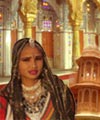 |
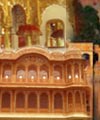 |
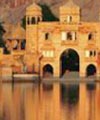 |
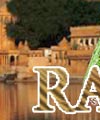 |
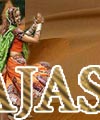 |
 |
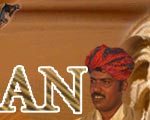 |
||
|
Jaipur
Capital city of Rajasthan also known as "Pink City" is about 250 km from Delhi, and your starting point for Rajasthan. Founded by Raja Sawai Jai Singh II in 1727 is famous for Amber Fort, jantar mantar, hawa mahal, city palace & Sisodia Rani Ka Bagh. Also for the textile block prints, semi precious jewelry, handicraft items and Raj Mandhir (Movie theater). Built by the warrior-astronomer Raja Sawai Jai Singh II in 1727, it is full of formidable forts, enchanting palaces and lovely temples. Jaipur is listed in most tourist books as one of the three cities that make India's Golden Triangle - the other two are Delhi and Agra. The old city of Jaipur is enclosed within seven gates, the most important of which are Chandpol, Jaipuri and Sanganeri. Culture There is a timeless appeal to Jaipur’s colorful bazaars where one can shop for Rajasthani handlooms and trinkets. Beautifully laid out gardens and parks, attractive monuments and marvelous heritage hotels, once the residence of Maharaja’s are worth admiration. Not to mention the ambling camels and cheerful people in multi-hued costumes that make your trip to the pink city a memorable one. Hawa Mahal Most of the people come her to see the beautiful facade, but ou canalso climb the top for a view of the city below; peer through the latticed windows to experience the facinating interplay of gazes ste up by the structure. The entrance is from the rear ot the building. Amber Fort Within the complex, Ganesh Pol, an imposing gateway painted with images of the elephant-headed god, Ganesh, takes pride of the place. Also a part of the complex is the Diwan-i-Am or hall of the public audience with its spectacular display of pillars. The typical merging of Rajput and Mughal architectural styles is captured in the Sukh Nivas and Jas Mandir apartments, and the Charbagh garden with its perfectly proportioned landscaping. A highlight is the pierced screen windows which offer views form points of vantage, as well as the shimmering mirrors encrusting the walls of the Sheesh Mahal. Several other gardens and pavilions within the sprawling spread of ramparts offer enough scope for investigating medieval lifestyles at leisure.
Beyond the ramparts, the old city, once the abode of the aristocracy, has a wonderfully medieval flavor, though it has few buildings of majestic proportion that are still extant. However, a walk through the rambling lanes will reap rich rewards for the curious besides a large number of temples there are also step-wells, memorials and townhouses. City Palace Before the palace proper lies the Mubarak Mahal (Welcome Palace), built in late 19th century by Maharaja Sawai Madho Singh II as a reception center for visiting dignitaries. It now forms part of the Maharaja Sawai Mansingh II Museum and contains a collection of royal costumes and superb shawls including sanganeri block prints, royal shawls. Kashmiri Pashmina (goat's wool) shawls, folk embroideries and benaras saris. At the heart of the complex is the seven - tiered Chandra Mahal where erstwhile royal family is still in residence, though only a small part of the apartments are occupied. However, it is only the buildings around Chandra Mahal that are open to the public, and these also form a part of the museum. Through Singh Pol (Lion Gate), visitors can approach the Diwan-i-Khas and Diwan-i-Am, where the maharaja's private and public courts would be held. The architecture seems to consist of a number of arched, pillared halls, while the courtyards with painted doorways are a prominent feature. Jantar Mantar Jantar mantar (or 'instrument of calculation')is a curious if somewhat compelling collection of sculptures. In fact, each construction has a specific pirpose, for example, measuring the positions of the stars, altitude and azimuth, and calculating eclipses.More................... Shopping Getting There By Bus By Train Getting around
|
||||||||||
|
||||||||||
|
||||||||||
|---|---|---|---|---|---|---|---|---|---|---|
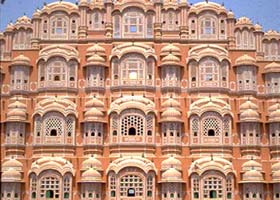
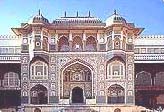 history so old, it is not unexpected that there is a lot of the
past that can be traced in its archeological history.While many
of the early structures have either disappeared or ruined, those
dating from the16th century on are in a remarkable state of preservation.
Amber as it exists now is the handiwork of three of the kingdom's
rulers that include Man Singh, and Jai Singh I and II. Approached
from a steep ramp, visitors ride up on elephant back, entering through
the grand Singh Pol gateway and continuing to Jaleb Chowk, the courtyard
where they disembark from the pachyderm. From here, they are faced
wit two flights of steps, one leading to Shila Mata complex with
its enshrined image of the goddess, and the other to the main palace
complex.
history so old, it is not unexpected that there is a lot of the
past that can be traced in its archeological history.While many
of the early structures have either disappeared or ruined, those
dating from the16th century on are in a remarkable state of preservation.
Amber as it exists now is the handiwork of three of the kingdom's
rulers that include Man Singh, and Jai Singh I and II. Approached
from a steep ramp, visitors ride up on elephant back, entering through
the grand Singh Pol gateway and continuing to Jaleb Chowk, the courtyard
where they disembark from the pachyderm. From here, they are faced
wit two flights of steps, one leading to Shila Mata complex with
its enshrined image of the goddess, and the other to the main palace
complex.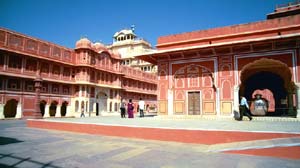 e
recent, some dating to the start of the 20th century. The palace
is a blend of Rajasthani and mughal architecture. The son of the
last Maharaja and his family still live in part of the palace.
e
recent, some dating to the start of the 20th century. The palace
is a blend of Rajasthani and mughal architecture. The son of the
last Maharaja and his family still live in part of the palace. zaars
are very colorful and world famous like Johari Bazaar, Mirza Ismail
Road (MI Road), Bapu Bazaar etc. You can shop from handicrafts,
jewelry, carpets, textile, home furnishing and lot more. But, you
have to be very careful in shopping and bargain hard.
zaars
are very colorful and world famous like Johari Bazaar, Mirza Ismail
Road (MI Road), Bapu Bazaar etc. You can shop from handicrafts,
jewelry, carpets, textile, home furnishing and lot more. But, you
have to be very careful in shopping and bargain hard.